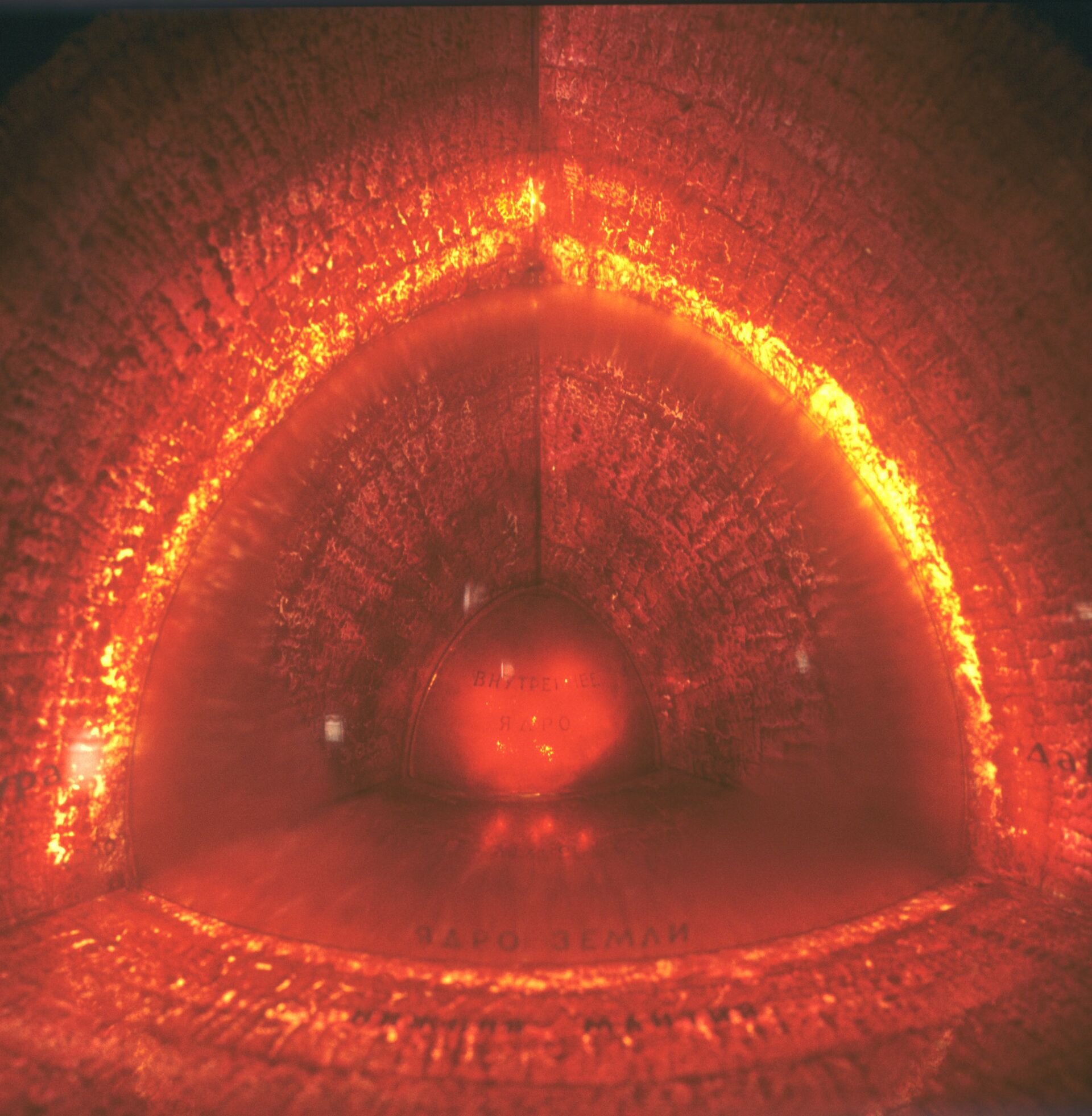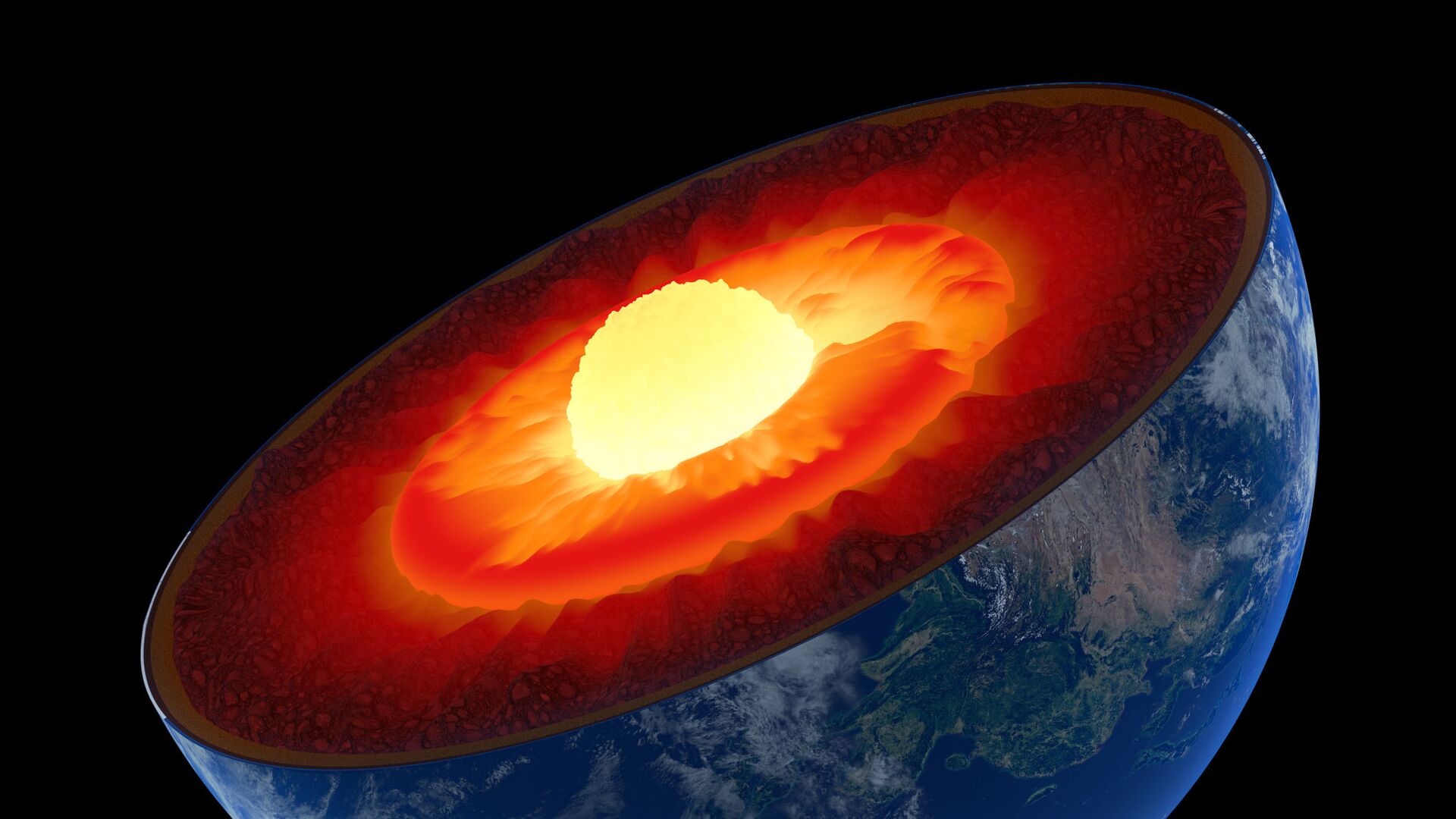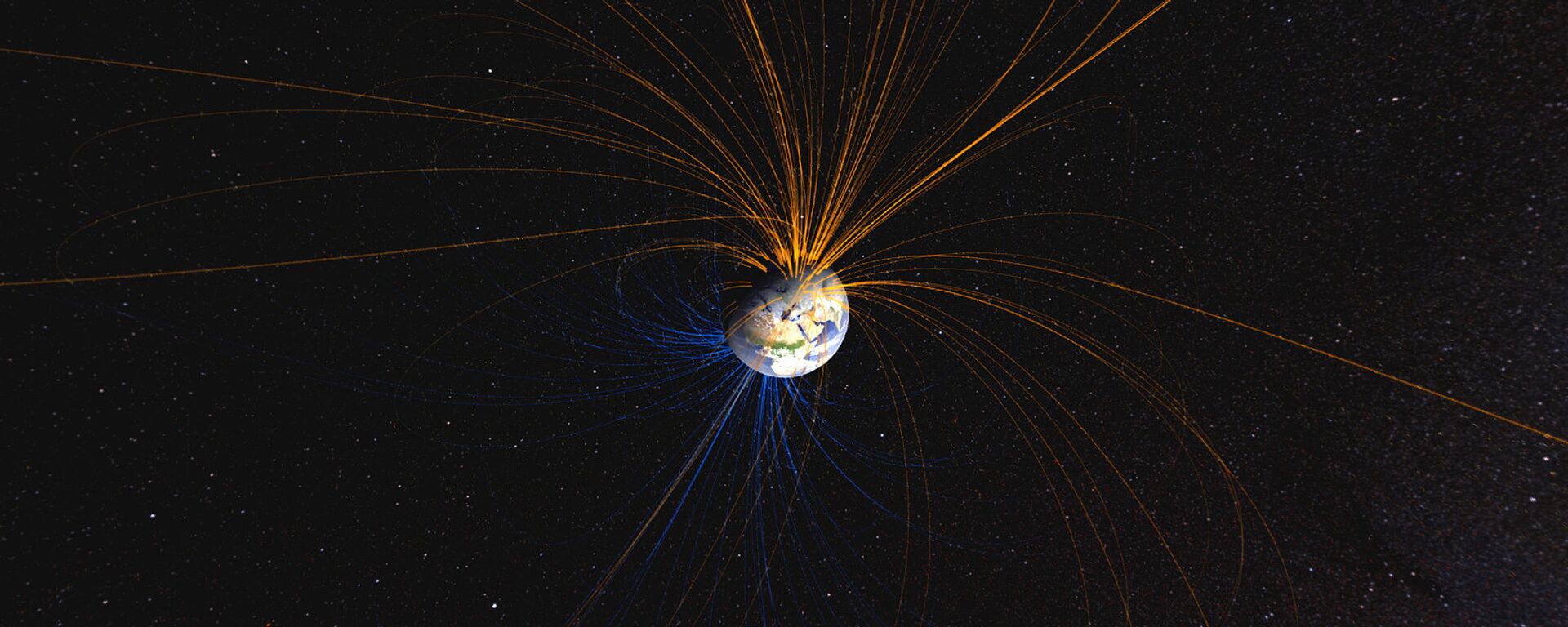https://sputnikglobe.com/20220612/earths-inner-core-mysteriously-wobbles-back--forth-affecting-length-of-a-day-study-shows-1096245809.html
Earth’s Inner Core Mysteriously Wobbles Back & Forth, Affecting Length of a Day, Study Shows
Earth’s Inner Core Mysteriously Wobbles Back & Forth, Affecting Length of a Day, Study Shows
Sputnik International
Over the years, scientists have been learning increasingly more about the complex, layered structure of the interior of our planet. Earth’s inner core – the... 12.06.2022, Sputnik International
2022-06-12T14:32+0000
2022-06-12T14:32+0000
2022-11-03T19:33+0000
university of southern california (usc)
inner core
science & tech
earth
https://cdn1.img.sputnikglobe.com/img/07e5/03/05/1082266219_0:267:2049:1419_1920x0_80_0_0_2547b0101dbe3e58b867d5e7d9d9b46f.jpg
New research into Earth’s layered inner structure has revealed that the planet’s core oscillates, going back and forth over a mile in a six-year period. Furthermore, this can be used to explain the variation in the length of a day, which has similarly “oscillated”.The findings of the University of Southern California (USC) scientists, laid out in the paper Seismological observation of Earth’s oscillating inner core and published in Science Advances on 10 June, contradict previously accepted models.The inner core of our planet, boasting a temperature of about 10,000 °F (5,400 °C), is followed by the outer core, lower mantle, upper mantle, crust, and atmosphere.The core, believed to consist mostly of an iron-nickel alloy and shaped like a solid ball, rotates in a process called a super-rotation. Previously, scientists thought that the inner core’s rotation was consistently faster than that of the planet's surface.The team analysed seismic data provided by the LASA (Large Aperture Seismic Array) on the basis of a computer model of the core's movement.Professor Vidale discovered that the inner core of Earth rotates approximately 0.1 degrees annually. The scientists also believe that their findings can now explain the variation in the length of a day over the past several decades.He added that the theory that the inner core oscillates has been “out there”, but the scientific community was split on its viability.“We went into this expecting to see the same rotation direction and rate in the earlier pair of atomic tests, but instead we saw the opposite. We were quite surprised to find that it was moving in the other direction”, the scientist said.Vidale hailed the findings as helping further understand how Earth’s inner core formed and how it moves over time.
https://sputnikglobe.com/20220527/esas-orbiting-satellite-finds-giant-magnetic-wave-in-earths-core-1095821196.html
https://sputnikglobe.com/20220527/catastrophe-looming-earths-molten-iron-core-may-be-rusting-hints-new-research-1095821991.html
earth
Sputnik International
feedback@sputniknews.com
+74956456601
MIA „Rossiya Segodnya“
2022
News
en_EN
Sputnik International
feedback@sputniknews.com
+74956456601
MIA „Rossiya Segodnya“
Sputnik International
feedback@sputniknews.com
+74956456601
MIA „Rossiya Segodnya“
university of southern california (usc), inner core, science & tech, earth
university of southern california (usc), inner core, science & tech, earth
Earth’s Inner Core Mysteriously Wobbles Back & Forth, Affecting Length of a Day, Study Shows
14:32 GMT 12.06.2022 (Updated: 19:33 GMT 03.11.2022) Over the years, scientists have been learning increasingly more about the complex, layered structure of the interior of our planet. Earth’s inner core – the hottest part of the planet – has been shown to move and change over decades.
New research into Earth’s layered
inner structure has revealed that the planet’s core oscillates, going back and forth over a mile in a six-year period. Furthermore, this can be used to explain the variation in the length of a day, which has similarly “oscillated”.
The findings of the University of Southern California (USC) scientists,
laid out in the paper
Seismological observation of Earth’s oscillating inner core and published in Science Advances on 10 June, contradict previously accepted models.
“The inner core is not fixed – it is moving under our feet, and it seems to going back and forth a couple of kilometres (1.25 miles) every six years”, said lead author of the research, Professor John Vidale of the University of Southern California.
The inner core of our planet, boasting a temperature of about 10,000 °F (5,400 °C), is followed by the outer core, lower mantle, upper mantle, crust, and atmosphere.
The core, believed to consist mostly of an iron-nickel alloy and shaped like a solid ball, rotates in a process called a super-rotation. Previously, scientists thought that the inner core’s rotation was consistently faster than that of the planet's surface.
The team analysed seismic data provided by the LASA (Large Aperture Seismic Array) on the basis of a computer model of the core's movement.
“From our findings, we can see the Earth’s surface shifts compared to its inner core, as people have asserted for 20 years”, said John E. Vidale, co-author of the study and Dean’s Professor of Earth Sciences at USC Dornsife College of Letters, Arts and Sciences.
Professor Vidale discovered that the inner core of Earth rotates approximately 0.1 degrees annually. The scientists also believe that their findings can now explain the variation in the length of a day over the past several decades.
“… Our latest observations show that the inner core spun slightly slower from 1969-71 and then moved the other direction from 1971-74. We also note that the length of a day grew and shrank as would be predicted. The coincidence of those two observations makes oscillation the likely interpretation”, Vidale stated.
He added that the theory that the inner core oscillates has been “out there”, but the scientific community was split on its viability.
“We went into this expecting to see the same rotation direction and rate in the earlier pair of atomic tests, but instead we saw the opposite. We were quite surprised to find that it was moving in the other direction”, the scientist said.
Vidale hailed the findings as helping further understand how
Earth’s inner core formed and how it moves over time.




